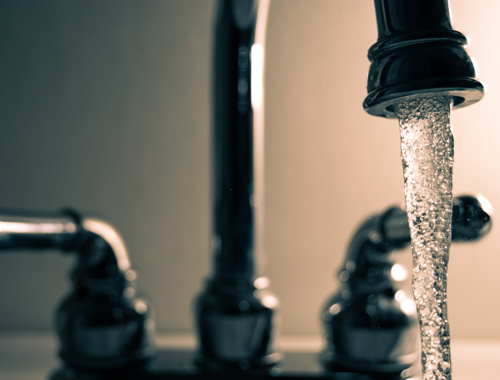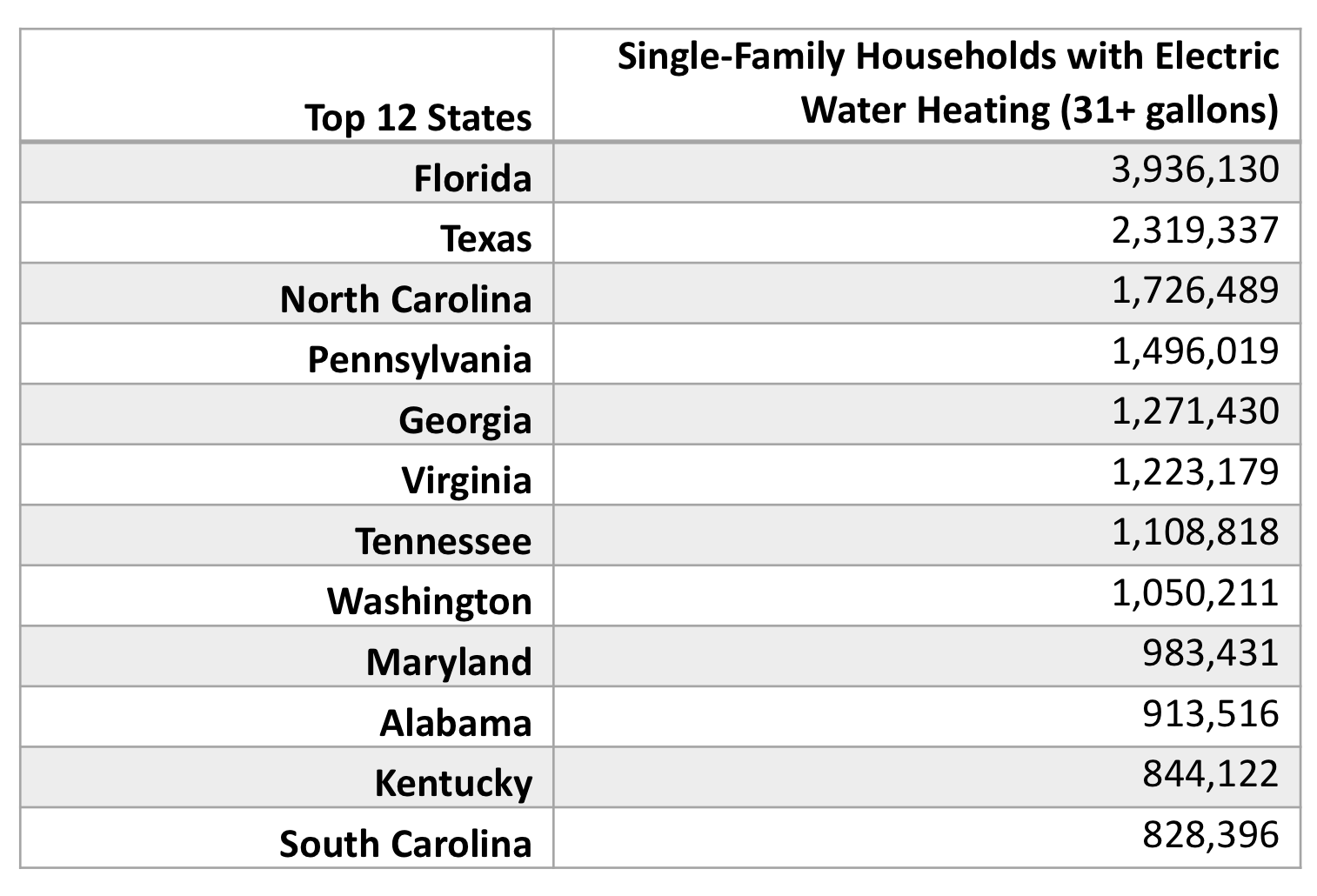
20 Mar Wholesale Channel Strategies for Heat Pump Water Heaters
3 keys for successful midstream programs
BY BRIAN BOOHER, D+R INTERNATIONAL
The Heat Pump Water Heater Opportunity
 Last week, I was in Nashville, Tenn., for ACEEE’s 2019 Hot Water Forum. It’s always a great event with tons to learn about the latest technology and policy developments in the world of water heating. After the past few years in Portland, Ore., it was exciting to be in Nashville – and not just for the hot chicken and honky-tonks.
Last week, I was in Nashville, Tenn., for ACEEE’s 2019 Hot Water Forum. It’s always a great event with tons to learn about the latest technology and policy developments in the world of water heating. After the past few years in Portland, Ore., it was exciting to be in Nashville – and not just for the hot chicken and honky-tonks.
The southeast has tremendous potential to save energy and reduce water heating costs. According to D+R research, nine of the top 12 states for electric water heating are south of the Mason-Dixon line and east of the Mississippi, with over 12.8 million inefficient, standard electric water heaters in operation.
The latest generation of heat pump water heaters (HPWH) are available from every major brand, reduce water heating energy consumption by 60%, and can save consumers $4,000 or more over the life of the unit. But there are challenges to HPWH adoption, particularly in the replacement market:
- First-cost premium is high. HPWHs cost about $1,500 more installed than a standard 50-gallon electric tank water heater. The premium can be even higher for installers that are less familiar with the product.
- Limited availability and visibility at distribution. Some distributors may not stock HPWHs, and those who do also focus on thousands of other product SKUs.
- No enthusiastic support from installers. Plumbers prefer to replace a failed water heater with the same type of water heater – it is a faster, less expensive service, and plumbers view themselves as service providers rather than salespeople. Most installers don’t offer the product unless the customer asks for it.
- No broad awareness and demand from consumers. Despite the benefits of the product, many consumers don’t know there are more energy-efficient options available, or that there may even be utility incentives. If your water heater fails, you just want to take a hot shower again as soon as possible.
Midstream instant rebates can help overcome market barriers
As utilities consider the future of their energy efficiency programs, many are recognizing that mail-in rebates are not working. With mail-in rebates, consumers and contractors need to pay more out-of-pocket, fill out paperwork, and wait for reimbursement. Even with incentives of $500 or more in some areas, consumer uptake remains low, with only 72,000 HPWHs shipped nationwide in 2017 (less than 2% of the residential electric water heater market).
D+R mystery shopped 192 installers in six states in the summer of 2017: Maine, Vermont, Oregon, Washington, Maryland, and Florida. In Maine and Vermont, where program sponsors offered midstream instant rebates of $750 and $500, respectively, installers were more likely to:
- Offer HPWHs unprompted
- Have a positive attitude about HPWHs
- Know and use HPWH selling points
- Quote lower prices upfront
- Give the same timeframe for installation for both standard and HPWHs
Three key strategies for wholesale channel programs
Instant rebates by themselves are not guaranteed to succeed. To launch a successful midstream program, utilities should prioritize these key strategies.
1. Meet with manufacturers, manufacturer rep agencies, distributors, and installers to align your program with their business models
Whether transitioning to instant rebates or starting a brand-new program, you should understand supply chain relationships, market dynamics, and barriers to adoption that are specific to your territory. HPWHs are only a small part of the market’s focus, and they will not participate if your program does not help them grow their business and be more profitable, or worse – if it costs them money from lost rebate payments or lost customers. Sit down with your market partners and work out clear strategies for promoting HPWHs beyond the instant rebate. For example, you can support promotional events for installers at distributor branches, coordinate consumer marketing campaigns, and provide training resources.
2. Streamline and automate the data collection and invoicing process
Collecting customer data in exchange for rebates is important for utilities to get proper attribution and credit from regulators. Unfortunately, it can be a major pain point for distributors. While most distributors have sophisticated electronic record systems, the process of collecting data on where a product was installed – either before or after the fact – requires training for branch staff and installers, IT resources, and administrative effort. Programs such as Efficiency Vermont, Efficiency Maine, and the Northwest Energy Efficiency Alliance (NEEA)’s regional Hot Water Solutions program offer per unit administrative fees of $40 or more directly to the distributor to help support data collection.
But even with administrative support, distributors are wary of discounting the product in advance if there is a risk they will not be reimbursed. Installers that do not regularly install HPWHs (i.e., most of them) may not be aware that they need to collect and return that customer data to their distributor, which can result in lost opportunities. Midstream retail programs have implemented instant validation using mobile apps – where the customer fills out a basic form on the app and presents a validated coupon at check out to receive the discount. Utilities should invest in similar mobile solutions for the wholesale channel to increase the confidence among installers and distributors that the rebate will be paid, and significantly streamline the data collection process.
3. Coordinate with neighboring utilities and establish consistent processes and messaging
Installers and distributors serve wide territories, sometimes 50 miles or more from their offices. In places where those service territories cross multiple utility territories with different rebate programs, there will be significant confusion about which rebates are available. Regional and statewide programs can consolidate program administration, making it easier to establish processes for data collection. Because consumer and installer awareness continue to be significant barriers, consistent marketing is an extremely important component of any program. You want your customers and the market to know exactly what the rebate amount is and how exactly it will be paid. Traditional approaches of bill-stuffers and postcards still prove successful and can be targeted to high-propensity zip codes. Combine consumer marketing with highly visible collateral in distributor branches, with clear information about the instant rebate process. If coordinating rebate amounts and administration with neighboring utilities is not possible, an instant validation mobile app could be very useful in helping to qualify customers in your territory and take the burden off of installers to know exactly what rebates are available in every zip code.
Brian Booher is the senior project manager supporting wholesale supply channel development for NEEA’s Hot Water Solutions program. Since 2017, D+R has engaged with manufacturers, manufacturer reps, corporate and branch-level distributors, and installers to advanced HPWH adoption in Idaho, Montana, Oregon, and Washington on behalf of NEEA. Learn more about D+R’s solutions for energy efficiency.

